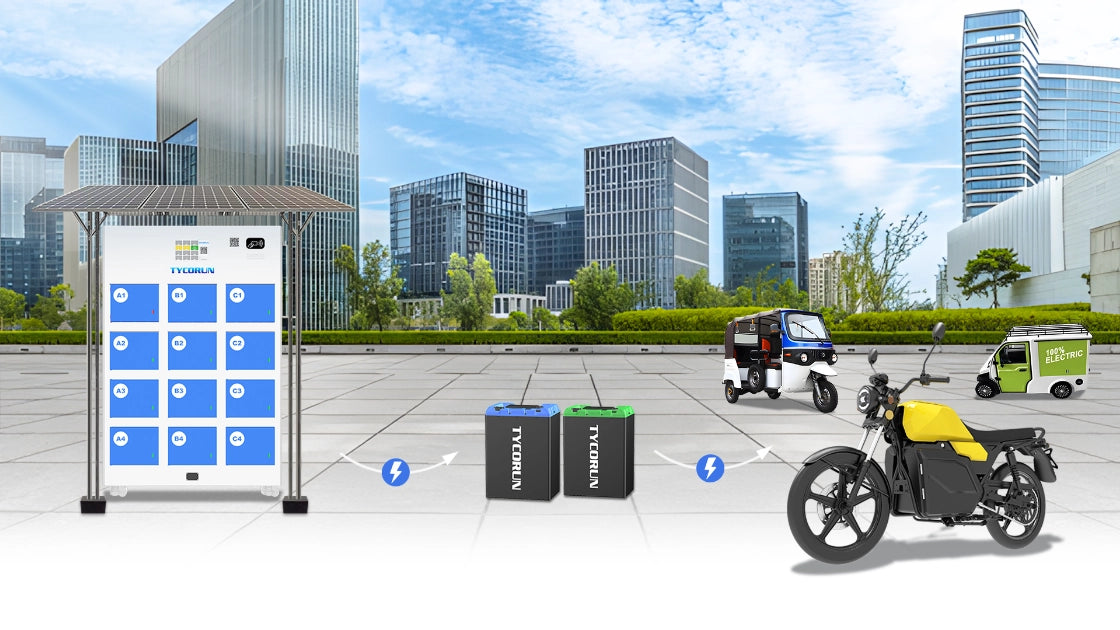
Main content:
- How do lithium batteries store energy
- The best way of how to store batteries
- How to store and maintain different batteries
- How to store batteries - lithium ion
- How to store batteries - lead acid
- How to store batteries - nimh
- Where is the best place to store batteries
- The self-discharge rate of different batteries during storage
- What factors should be considered in storing batteries at home
- What are the benefits of storing batteries properly
- How to safely dispose of batteries
Undue exposure, improper handling, and carelessness can lead to fast degradation of batteries. This article focuses on how to store batteries correctly for long-lasting usage and avoiding wasteful spending by knowing how to keep lithium batteries.
1. How do lithium batteries store energy
Lithium batteries are among the most rechargeable battery types. Lithium is a critical component of its electrochemistry. This implies that they use a reversible reduction of lithium ions to store energy, which can be recharged and reused.
In simple terms, lithium batteries have lithium cathode and carbon anode, respectively. When charging, the electrolyte transports lithium ions from the cathode to the anode, and when discharging, the process is reversed, allowing free electrons.
This makes it possible for energy to be stored and utilized efficiently, which is why lifepo4 batteries have very high energy and power density. Then we have a look at how to store batteries.
2. The best way of how to store batteries
The best way of how to store batteries is for you to place them:
- At the best place. The best place of how to store batteries is to keep them in a cool and dry place.
- In the best way. How to store batteries in the best way is to avoid placing it in a metallic place or in such a way that the ends can touch each other.

- The optimal temperature. The optimal temperature frame means you should mind the chage of temperature. If batteries are exposed to higher or lower temperatures, the lifespan will be affected.
3. How to store and maintain different batteries
Different batteries have different utility values and storage systems. This is why learning how to store batteries seperately and differently is essential.
① How to store batteries - lithium ion
Lithium-ion batteries should be kept at temperatures between 18-25℃. Away from direct sunlight or any other source of heat or moisture. However, the storage needs to be adequately ventilated.
To maintain a lithium-ion battery, first, you must follow the instructions that come with the pack when buying it new or when you have stored it away for an extended period. In this case you can find the battery stores nearby to have a request.
Secondly, before putting it away for storage, make sure it is charged up to 50% capacity or more.
And lastly, when storing lithium-ion batteries, separate the battery from the product. It is forbidden to store lithium batteries and other flammable and explosive materials in the same warehouse
② How to store batteries - lead acid
The most important rule for lead acid battery maintenance is that the more you recharge the battery before a complete discharge, the longer the battery will last. And if you have to store a lead acid battery, ensure it is fully charged to avoid sulfation.

Sulfation is a situation where there is a crystal formation in the lead acid that prevents the battery from functioning at a maximum capacity and eventually leads to damage to the battery.
The best way to maintain your lead acid batteries is to:
- Religiously monitor the level of fluid. Covering the top-up cells must be reasonable.
- Avoid topping up your fluid before charging it. Charge it before topping up the fluid.
- Always ensure that the batteries are fully charged.
- Religiously monitor the Battery Discharge Indicator (BDI). Recharge the battery once it drops to 25%.
- Always ensure that the lids are clean at all times.
③ How to store batteries - nimh
The best way to store Nimh battery is to ensure the temperature is low and the room is well-ventilated. Other practices that can help maintain your Nimh batteries are:
- The storage area of Nimh batteries should be kept clean, cool and ventilated.
- The temperature should be between 10~25 °C, and the maximum temperature should not exceed 30 °C.
- The relative humidity should not be more than 65%.
In addition to storage temperature and humidity requirements, note when storing NiMH batteries:
Long-term nimh batteries should be stored in a state of charge, which can be stored after precharging 50~100% of the charge. During the storage of Nimh batteries, it should be ensured to charge them at least once every 3 months to restore the battery capacity to a saturated state.
4. Where is the best place to store batteries
Battery organizers are the best place of how to store batteries. Most organizers are designed to keep your batteries at the best temperature fit for them. Also, they are designed to ensure that batteries are arranged such that no contact is made.

No matter where you store and how to store batteries, if they contact each other, it can discharge that way. If you don't have an battery organizer, find a dry and cool place that is not moist or damp. Most importantly, ensure you get the room temperature right for your battery type. It's very important for you to know how to store batteries.
5. The self-discharge rate of different batteries during storage
Undue exposure can accelerate a battery self discharge. However, undue exposure can be interpreted differently for each battery type. As for a lithium-ion battery, undue exposure is when the battery is kept at a temperature above 18-25℃.
But typically, the battery's self-discharge rate is less than 3.5% at room temperature every month. If the lithium battery is stored in a place where the temperature is too high, it will accelerate the self-discharge rate and also damage the battery life.

The lead acid battery's self-discharge rate is 3%-5% at room temperature. However, an increased temperature can accelerate the risk of sulfation. Meanwhile, NiMH has the highest discharge rate. It discharges at 30% at rooom temperature afterward.
6. What factors should be considered in storing batteries at home
Tips of how to store batteries in your house, you need to consider some of the following factors:
● Storage time
Batteries are made for use; you should only plan to store them for a while. The storage period should be as short as possible.
● SOC of the battery
A battery's state of charge (SOC) is the available capacity. It represents the ratio of the remaining dischargeable charge of the battery, after a period of use or long-term inactivity to its fully charged state. The SOC of a battery can be between 0%-100%.
When SOC=0, the battery is completely discharged. And when SOC=100%, the battery is fully charged. For instance, if a battery's SOC is 100% before use, you can be sure it will function optimally when ready to use it.
● Temperature and humidity
The environmental condition affects the state of a battery when stored. Batteries can neither be stored at very high temperatures nor very low temperatures. If the temperature is not right, batteries should not be stored; otherwise, they'll be damaged.

● How to place it
When batteries are in contact with each other, there's a possibility of a current flow, and they can therefore be discharged. So also, if they are placed in a metallic place. This is why you should check out the place you are about to keep it.
● Charging interval
Some batteries require that you charge them periodically for them to function optimally. Check out your battery to note the charging intervals so that you can know when to recharge it even while you store it away.
● Pets and Children
Pets and little children are innocent, so you need to keep your batteries away from their reach. If you have many children or pets in your home and there's no room for keeping your batteries, you should consider not storing them at all in the home.
7. What are the benefits of storing batteries properly
It makes the batteries last longer, and you can get the best value for the money spent. It is cost-effective. You won't need to replace the batteries constantly. It reduces your carbon footprint.
8. How to safely dispose of batteries
Some of the benefits of storing batteries properly are: Trashing batteries carelessly is environmentally harmful. It is sensible to dispose of all battery types properly.
The careless disposal of lithium-ion batteries may cause a fire outbreak during recycling. Therefore, it is best if you dispose of them properly. Dispose of used lithium-ion batteries according to the instructions or the methods recommended by the battery store.
Related articles: Top 10 lithium battery companies in the world, battery high energy density, battery capacity loss
















